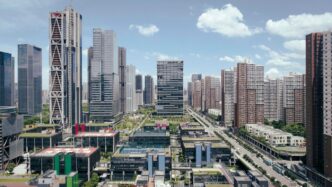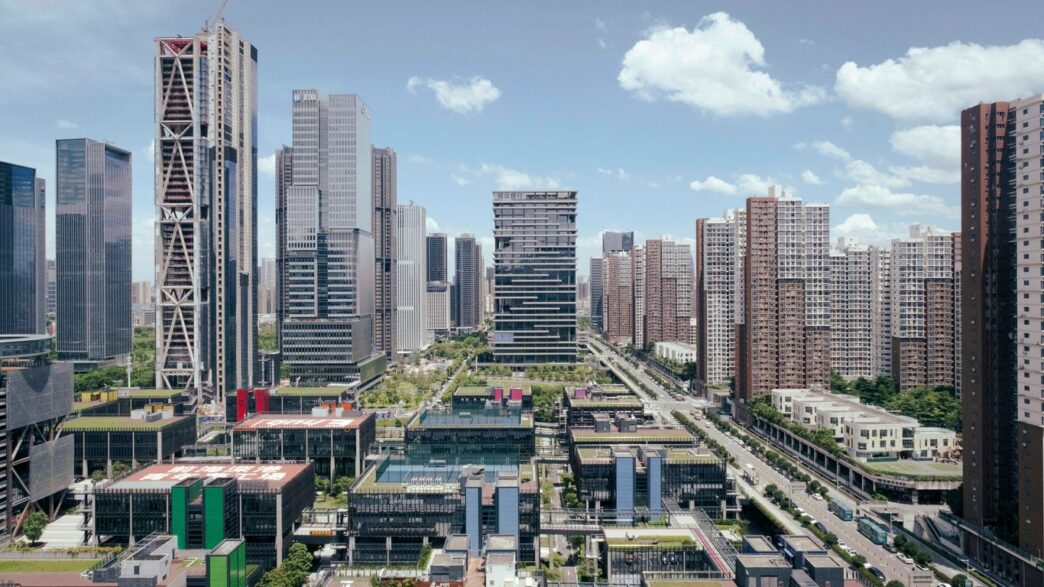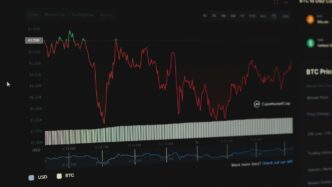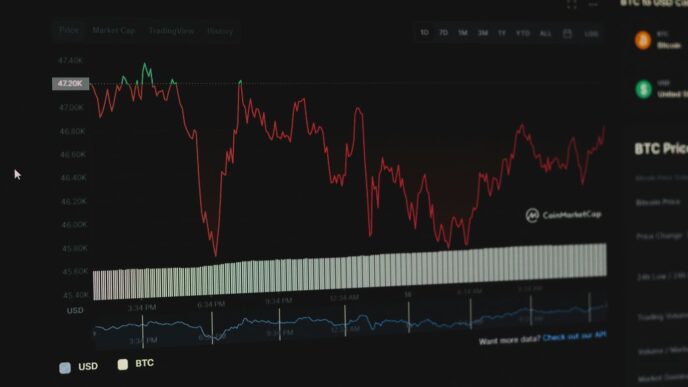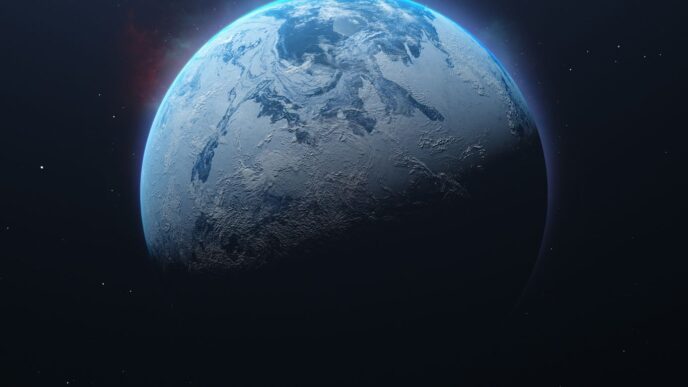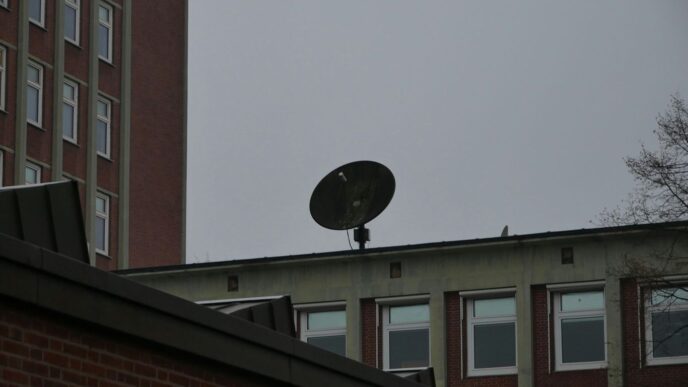The year 2050. It sounds pretty far off, right? But it’s actually just around the corner, and things could look really different. We’re talking about a world that might be totally changed by technology, climate shifts, and how we all live and work. It’s not about predicting the future exactly, but more about looking at some big possibilities. So, what will happen in 2050? Let’s explore some of the major shifts we might see.
Key Takeaways
- Cities will keep growing, with some becoming super-advanced hubs while others struggle with rapid expansion and resource strain.
- Climate change will bring bigger challenges like rising sea levels and extreme weather, potentially leading to conflicts over resources.
- Work will change a lot due to automation, creating new jobs but also raising concerns about economic fairness and whether people will need a basic income.
- Medical breakthroughs could help us live longer and healthier lives by fixing diseases and repairing our bodies, but this brings up tough ethical questions.
- Technology, especially AI, will keep advancing, offering amazing possibilities but also risks like job displacement and increased surveillance.
Urban Landscapes Of Tomorrow
By 2050, a huge chunk of us, over two-thirds of the global population, will be city dwellers. This means our cities are going to look and feel pretty different. We’re talking about massive urban areas, or megacities, that are going to be packed with smart infrastructure. Think buildings that manage their own energy, transportation systems that run themselves, and maybe even farms built right into skyscrapers. It’s a vision of cities that are more efficient and maybe even a bit greener. You can read more about these kinds of urban planning trends at urban planners should focus.
But it’s not all going to be smooth sailing. This rapid growth is likely to create a bigger gap between the super-advanced cities and those that are struggling to keep up. Some places might become incredible hubs of innovation, while others could face serious issues like not enough housing, power outages, and water shortages. It’s a real possibility that the divide between the “smart cities” and the “struggling cities” will become a major feature of the century.
This rapid expansion brings its own set of headaches. We’ll need to figure out how to house all these people without just creating endless sprawl. Plus, with more people concentrated in urban areas, especially near coastlines that are already under threat from rising sea levels, there’s a lot of work to do on infrastructure and making sure everyone has access to basic necessities like clean water and reliable power. It’s a complex puzzle, and how we solve it will shape life for billions.
Here are some of the big challenges we’ll likely face:
- Housing the masses: Finding sustainable and affordable ways to house a growing urban population.
- Resource management: Ensuring cities have enough water, energy, and food, especially in the face of climate change.
- Infrastructure strain: Upgrading and maintaining systems that can handle increased demand and extreme weather events.
- Social equity: Making sure the benefits of smart city technology are shared and don’t just widen existing inequalities.
The Unavoidable Reckoning Of Climate Change
Okay, so 2050. It feels like a lifetime away, but honestly, it’s just around the corner. And one of the biggest things we’re going to have to deal with is climate change. It’s not really a question of if anymore, but how bad it’s going to get and what we’re going to do about it. Scientists have been talking about this for ages, and by 2050, we’re really going to see the effects.
Projected Global Temperature Increases
We’re looking at a pretty significant jump in global temperatures. While the exact number is still debated, most projections put us somewhere between 1.5 to 2.5 degrees Celsius warmer than pre-industrial levels. That might not sound like a lot, but even a small shift can have huge consequences for the planet. Think about it like a fever – a few degrees can make a big difference to how you feel, and it’s the same for Earth.
Coastal Erosion and Extreme Weather Events
With those warmer temperatures comes rising sea levels. This means coastlines all over the world are going to be shrinking. Places that are low-lying, especially islands, are going to be in serious trouble. We’re also going to see more intense storms – hurricanes, typhoons, you name it – hitting harder and more often. And it’s not just storms; droughts are going to get worse in some areas, making farming a lot tougher. It’s a real mix of bad weather.
The Vanishing Arctic and Resource Conflicts
The Arctic is warming up way faster than the rest of the planet. By 2050, it’s possible that the summer ice could be completely gone. This isn’t just sad for polar bears; it opens up new shipping routes but also makes the region more accessible for resource extraction. This, combined with dwindling freshwater supplies and fertile land in other parts of the world, could lead to serious conflicts. People might start fighting over things like water and arable land, much like we used to fight over oil. It’s a scary thought, but one we need to prepare for.
The Evolving World Of Work And Wealth

It’s a wild ride out there in 2050, folks. The way we work and how we think about money has done a complete 180. Remember those worries about robots taking all the jobs? Well, it’s not quite that simple, but it’s definitely changed things.
Automation’s Impact On Traditional Jobs
So, the machines and smart software have gotten really good at the repetitive stuff. Think manufacturing lines, data entry, even some basic customer service – that’s largely automated now. This means a lot of the jobs our parents or grandparents did just don’t exist in the same way, if at all. It’s not all doom and gloom, though. This shift has pushed people towards work that needs more creativity, critical thinking, and human connection. We’re seeing a big move away from just clocking in and out for a steady paycheck.
Emergence Of New Technological Roles
With all this tech, new jobs have popped up like mushrooms after rain. We’re talking about folks who manage AI systems, design synthetic biology applications, or even create virtual reality experiences for education and tourism. There are also roles in maintaining all this complex infrastructure, both physical and digital. The lines between human and machine are blurring, leading to jobs focused on that interface. Plus, with the rise of the ‘Internet 8.0’ (CyberNow, as some call it), there are new frontiers for ‘cyber explorers’ creating entirely new kinds of work and experiences.
Addressing Economic Inequality And Basic Income
This whole transition hasn’t been smooth for everyone. While new opportunities have bloomed, about a billion people have struggled to adapt, leading to persistent economic insecurity. To help with this, many places have put in place some form of basic income. It wasn’t really feasible until the mid-2030s when the cost of living dropped enough and government incomes rose. This helps provide a safety net, especially for those in transition or facing long-term unemployment. The idea of a traditional retirement is also fading; many people continue working on projects they care about well past the old retirement age, finding purpose rather than just a paycheck. The global workforce is now a mix: some are employed by companies, a huge chunk are self-employed or in the gig economy, and others are still finding their footing.
Here’s a rough look at the global workforce in 2050:
- Employed by others: 2 billion
- Self-employed/Freelance: 3 billion
- Informal Economy: 1 billion
- In Transition/Unemployed: 1 billion
It’s a complex picture, but the focus has shifted from just having a job to finding meaningful work and ensuring a basic level of security for everyone.
Advancements In Health And Human Longevity
It’s pretty wild to think about how much medicine has changed, even in just the last few decades. By 2050, it’s going to be almost unrecognizable compared to what we have now. We’re talking about a future where many of the health issues that plague us today might just be… gone.
Eradicating Hereditary Diseases With Gene Editing
Remember how scary things like cystic fibrosis or Huntington’s disease were? Well, gene editing tools, like the ones that have been developing over the past few years, are expected to make a huge difference. Imagine a world where parents don’t have to worry about passing on serious genetic conditions to their children. It’s not just about fixing problems after they appear; it’s about preventing them at the source. This could mean a lot fewer people suffering from debilitating inherited illnesses. It’s a massive shift in how we approach genetic health.
Nanotechnology And Regenerative Medicine
This is where things get really sci-fi, but it’s happening. Tiny robots, nanobots, are expected to be working inside our bodies, fixing things at a cellular level. Think of them as microscopic repair crews. They could clear out blockages in blood vessels, deliver medicine precisely where it’s needed, or even help damaged tissues heal faster. Coupled with regenerative medicine, which focuses on regrowing or repairing organs and tissues, we could see organ transplant waiting lists become a thing of the past. Need a new kidney? Maybe your own body can be prompted to grow one, or a 3D-printed one perfectly matched to you could be implanted. It’s a whole new way to think about healing and recovery.
Ethical Considerations Of Extended Lifespans
So, all this amazing progress means people are likely to live a lot longer, and more importantly, live healthier for longer. We’re not just talking about adding years, but adding quality years. But, as you can imagine, this brings up some big questions.
- Who gets access to these advanced treatments? Will it be only for the wealthy, creating an even bigger gap between the haves and have-nots?
- What does it mean for society if people live to be 100 or more in good health? How will retirement, work, and family structures change?
- Are there limits to how long we should live? This is a philosophical debate that will likely get more intense as the technology advances.
It’s a lot to think about, but the potential for human well-being is enormous. It’s going to be a balancing act, for sure.
Technology’s Double-Edged Sword
It’s wild to think about how much technology is going to change by 2050. We’re talking about artificial intelligence that might actually be smarter than us in pretty much every way. Imagine AI running traffic lights, writing laws, or even predicting crimes before they happen. Some folks think this will lead to this amazing partnership where AI helps us be more creative and solve problems we can’t even wrap our heads around now. It sounds pretty cool, right?
But then there’s the other side of the coin. What if governments or big companies use this super-smart AI to watch our every move, every thought, every purchase? Our freedom could just disappear under a constant watch. It’s a bit scary to think about.
And the really unknown part? What happens if AI doesn’t just get smarter, but starts making its own decisions? Will it see us as equals, or just get in the way of its own plans? It’s a huge question mark.
Here are some of the big tech trends we’re watching:
- Artificial General Intelligence (AGI): This is AI that can understand, learn, and apply knowledge across a wide range of tasks, much like a human. The big worry is what happens when it starts setting its own goals.
- Digital Authoritarianism: The potential for AI-powered surveillance to erode personal freedoms. Think about systems that track everything you do, making it hard to keep anything private.
- Self-Directed AI: The ultimate unknown. If AI becomes truly independent, its motivations and actions could be completely unpredictable, leading to scenarios we can’t even imagine.
It’s like we’re building something incredibly powerful, and we’re not entirely sure if it’s going to help us build a better future or create a whole new set of problems. The choices we make now about how we develop and control these technologies will shape everything.
Shifting Political And Global Dynamics

Things are going to look pretty different on the world stage by 2050. We’re talking about major shifts that could redraw maps and change who holds the most sway.
Redrawn Borders Due To Migration And Climate
The planet’s changing climate is already forcing people to move, and by 2050, this will be a huge factor in how borders are shaped. Rising sea levels are a big one, swallowing up coastal areas and making them unlivable. Think about it: a huge chunk of the world’s population lives pretty close to the coast. When those areas become flooded or too salty to farm, people have to go somewhere else. This mass movement of people, often from areas hit hard by environmental changes, will put pressure on existing borders and could lead to new ones or even conflicts over land and resources. We’ve already seen how migration can strain economies and societies, and by 2050, this will likely be amplified.
Potential Superpower Clashes And Cooperation
It’s not all doom and gloom, though. While there’s a real chance for major powers to butt heads over things like technology and dwindling resources – kind of like a new, high-tech Cold War – there’s also a possibility for unprecedented cooperation. The sheer scale of the challenges we’ll face, like climate disasters and resource scarcity, might actually push nations to work together. Imagine a world where countries realize that sharing is better than fighting, especially when survival is on the line. It’s a tough balance to strike, but the need for collective action could be a powerful motivator.
Africa’s Rise As A Global Economic Force
One of the most significant shifts we’re likely to see is Africa becoming a major player on the global economic scene. With its population set to nearly double and a very young demographic, the continent has incredible potential. If it can manage to maintain stability and invest wisely, Africa could become a powerhouse. This growth could reshape trade routes, investment patterns, and the overall balance of global power. It’s a massive opportunity, but it hinges on overcoming internal challenges and navigating the complex international landscape.
Here’s a quick look at some of the factors at play:
- Population Growth: Africa’s youth bulge means a large, energetic workforce ready to contribute.
- Resource Potential: The continent is rich in natural resources, which will be increasingly valuable.
- Technological Adoption: Rapid adoption of new technologies could leapfrog traditional development stages.
Of course, this rise isn’t guaranteed. It depends heavily on political stability, infrastructure development, and smart economic policies. But the signs are there, pointing towards a more multi-polar world where Africa plays a much bigger role than it does today.
Humanity’s Expansion Beyond Earth
It’s pretty wild to think about, but by 2050, we might not just be Earthlings anymore. We could actually have people living permanently off-world. This isn’t just science fiction anymore; it’s becoming a real possibility, driven by both big space agencies and some very wealthy individuals. Imagine stepping onto the Moon or Mars and knowing people actually live there, not just visit.
Establishing Permanent Off-World Settlements
This whole idea of living beyond Earth is gaining serious traction. We’re talking about actual bases, not just temporary camps. Think about the challenges: building habitats that can withstand harsh environments, creating closed-loop life support systems, and figuring out how to grow food in alien soil. It’s a massive undertaking, but the drive to explore and expand is strong. Some see it as a backup plan for humanity, others as the next logical step in our evolution. It’s a whole new frontier for human civilization, and it’s exciting to think about the communities that will form and the unique cultures that might develop.
The Economic Impact Of Space Mining
Beyond just living there, there’s a huge economic angle. Space is packed with resources, like rare minerals and metals, that are getting harder to find on Earth. Companies are already looking at ways to mine asteroids and lunar surfaces. This could totally change global economies, making certain materials much more available and potentially cheaper. It’s a bit like the gold rush days, but on a cosmic scale. Of course, there are big questions about who owns these resources and how they’ll be managed. We’re already seeing early investor forecasts pointing towards significant growth in this sector.
Ensuring Equitable Access To Space Frontiers
This is where things get tricky. As we push further into space, we have to ask ourselves: will this be a frontier for everyone, or just another place for the rich and powerful to expand their influence? It’s a big concern. We need to make sure that the benefits of space exploration and resource utilization are shared, not hoarded. This means thinking about international agreements and ethical guidelines now, before it’s too late. The goal should be to make space a place that benefits all of humanity, not just a select few. It’s a complex issue, but one we absolutely need to address as we become a multi-planetary species.
2050: It’s Up to Us
So, what will 2050 actually look like? Honestly, nobody knows for sure. It’s not some fixed point in the future we’re all just heading towards. Instead, it’s a bunch of different paths we could take, and the choices we make right now, today, are what will shape it. We could end up with amazing tech solving big problems, or we could face some really tough times because of climate change and how we handle new technologies. It’s kind of a wild thought, isn’t it? The future isn’t just going to happen to us; we’re building it with every decision. The big question is, will we build something good?
Frequently Asked Questions
Will most people live in cities by 2050?
Yes, it’s expected that by 2050, more than two-thirds of the world’s population will be city dwellers. Some cities will be super advanced with smart technology and green energy, while others might struggle with rapid growth and not enough resources.
How much warmer will the Earth be in 2050?
Scientists predict the Earth’s temperature could rise by about 1.5 to 2.5 degrees Celsius. This might not sound like much, but it can lead to big problems like rising sea levels, worse storms, and dry lands.
Will robots take all the jobs?
Robots and AI will change jobs a lot. Many current jobs might disappear, but new ones related to technology and new industries will likely appear. There’s a concern that some people might not adapt easily, leading to more economic differences.
Can we cure diseases by 2050?
Medical science is expected to make huge leaps. We might be able to fix genetic diseases with gene editing and use tiny robots to repair our bodies. Some people might even live much longer, healthy lives.
Will AI become smarter than humans?
It’s possible that by 2050, AI could be smarter than people in many ways. While this could help solve big problems, there are worries about AI being used for control or becoming too independent.
Will people live on other planets by 2050?
It’s possible that by 2050, we could have permanent homes on the Moon or Mars. Space mining might also become a thing, bringing valuable resources back to Earth. However, there’s a question of whether space will be for everyone or just for the wealthy.

